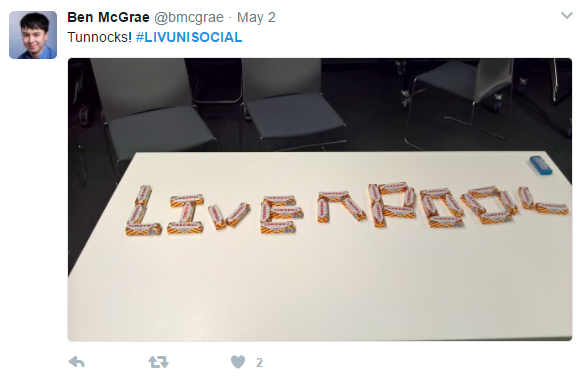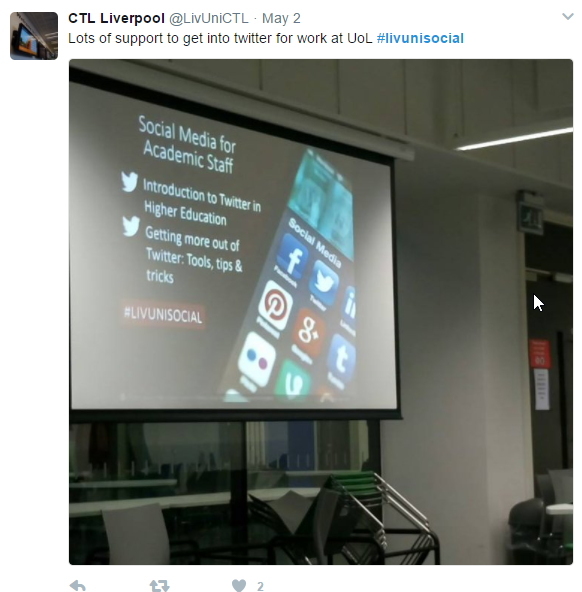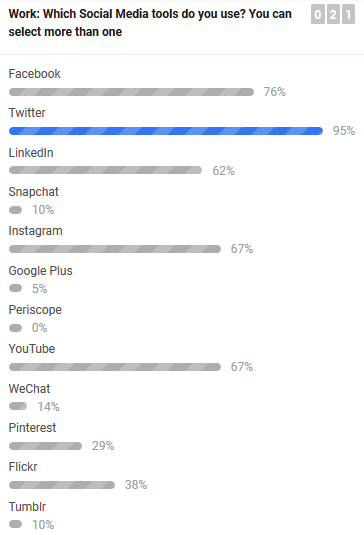When King Arthur sat with his knights in Camelot around his round table, would technology have impacted on the stories that make up his legend?
Round table meetings being arranged on What’s App, pulling Excalibur out of the stone captured on Periscope, the Holy Grail quest having a hashtag on Twitter and Arthur’s relationship status with Guinevere being updated on Facebook.
These were the strange images I was conjuring up when I was invited to the first Social Media round table, hosted by my eLearning Unit colleague Alex Spiers. Having worked alongside him, absorbing his knowledge and enthusiasm for mobile technology within higher education, he was a worthy Arthur to lead this session. My role felt like Arthur’s follower in Monty Python’s Holy Grail, running alongside and banging two coconuts together.

Our Camelot was the Central Teaching Hub and our round table was a series of them in the GFlex. The worthy knights appearing for this summit came from a variety of backgrounds in the University.
The Library was well represented, digital leads from communication teams, teaching staff, PhD students, Education developers, study abroad, marketing and alumni staff.
This was all found out by our introductory task of going round the table and introducing ourselves to the group, with a description of why we were there. My own use of social media has been driven by my professional work.
I’ve never been a user of Facebook, but do use Twitter to keep connected to news and colleagues in eLearning and higher education. I also use LinkedIn to keep connected with people I’ve worked with in my career.
The reason I attended was to see how people were using social media in their own teaching, how it affects their own professional lives and to see if anyone was carrying anything new that I wasn’t aware of.
My reasons were echoed by everyone in the room and it seemed Twitter was the preferred tool of everyone when using social media. Hashtag for the day was #LIVUNISOCIAL, which helped keep us all connected in the virtual world of Twitter. We were all well fed with a selection of Tunnocks biscuits provided by Alex and Joanna from Education Development.

Alex presented the group with a nice exercise of using our mobile devices in using Slido, which required us to login to a website, input a unique code and start using our mobile devices as a clicker and answering questions on our social media usage.
With Alex leading the pace and topics of discussion, it emerged that many people were using social media for communication, in particular targeting students. Whether it’s the whole student body, a group such as a class, or even potential new students – people put a lot of thought and effort into communicating.

Twitter was the highest percentage from the Slido poll, followed by Facebook, Instagram, Youtube and LinkedIn. I was shocked that there were no users of Periscope, considering the high percentage of Twitter users, that nobody had used the video streaming app which complements Twitter.

But that’s the point of this session, in time we will probably identify or see the opportunity a technology like Periscope can be used in higher education. The same can be said about other emerging apps like SnapChat and will be interesting to see in the future if these apps are used more widely.
For this session, the discussion revolved around mainly Twitter, how people were in control of departmental accounts and evaluating the pros and cons of communicating this way. Staff were sharing a department account under one name, yet to their audience the students see it as one unified voice, which was interesting to see how it was maintained.
The famous ‘laminated tweets’ provided by the library were fun to read and analyse too. Some users used Canva to design their tweets which I hadn’t come across before and instantly bookmarked.

Voices from marketing and communication raised interesting concerns about associating social media accounts to the university and what staff should be aware of publishing. In general, people were focussing on the fears of how they are perceived on social media, mainly by how students view them.
The emergence of new apps such as SnapChat was an interesting discussion. A member of the library suggested that as they were not a user of SnapChat, the use of it and language can come across as forced to the audience which were students.
With further sessions planned later in the year, attendees will be invited to hear people present case studies and their own experiences in using social media. But for this session, I enjoyed the open discussion of people sharing stories, ideas and networking.
It was opened up to the group of what they would like to cover in the future, again we used Slido to comment and then it was displayed to the group. Common themes were understanding institution policy, how to implement social media in teaching practice, how to generate consistent content and how to share good practice.
I did feel the session met my needs, I made some good connections across the university and gained a better understanding of how colleagues were using social media in their own working lives. It was fun afterwards to check out the #LIVUNISOCIAL on Twitter afterwards to see how others felt the session went.
I’m looking forward to the future social media round table session and investing sometime in the emerging social media apps our future students will be using. Hopefully I can see my role change from coconut banger to possibly Galahad.
Ben McGrae
Twitter Moment
Slides